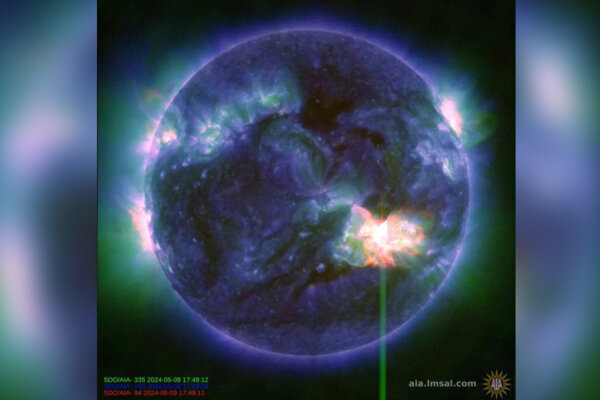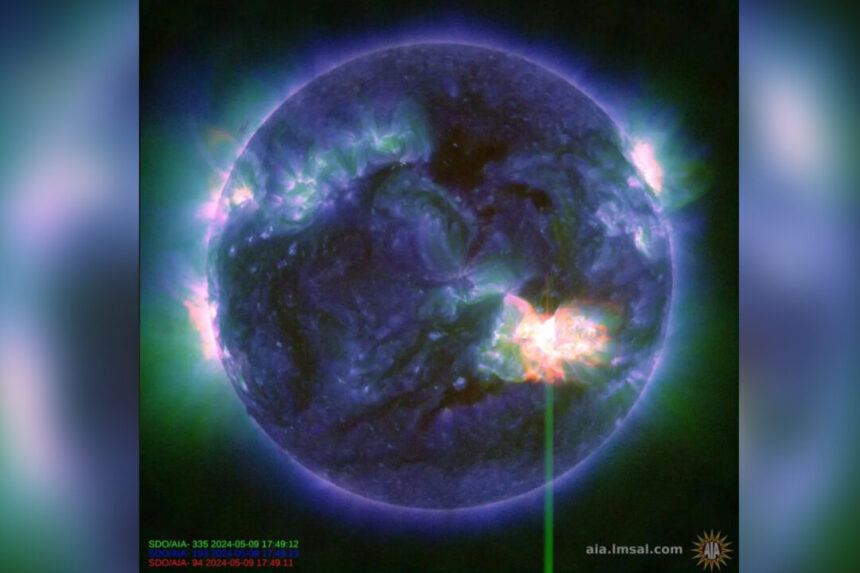
Severe geomagnetic storms like this one can lead to stunning displays of aurora on Earth.
A powerful solar storm hitting Earth could create northern lights in the United States this weekend and potentially disrupt power and communications.
Prior to the solar storm’s arrival, the Space Weather Prediction Center (SWPC) of the National Oceanic and Atmospheric Administration (NOAA) issued a severe geomagnetic storm watch warning, the first since January 2005.
The solar storm arrived on Earth on Friday afternoon, earlier than expected, with effects expected to last through the weekend and possibly into the following week.
The most intense solar storm on record in 1859 produced auroras in Central America and potentially even Hawaii. NOAA space weather forecaster Shawn Dahl stated, “We are not anticipating that, but it could come close.”
“We are expecting wave after wave of coronal mass ejections to strike the Earth on 11th and 12th May. Solar wind speeds of about 800 km/s are possible. Strong and extended geomagnetic storms are likely with auroras visible at lower-than-normal latitudes. Stay tuned,” he wrote.
Geomagnetic storms, caused by CMEs interacting with Earth’s magnetic field, have the potential to disrupt satellite operations, power grids, communication systems, and more.
“Geomagnetic storms can impact infrastructure in near-Earth orbit and on Earth’s surface, potentially disrupting communications, the electric power grid, navigation, radio, and satellite operations,” SWPC stated.
SWPC has alerted operators of these systems to take protective measures.
“For most people on Earth, they won’t need to do anything,” said Rob Steenburgh, a SWPC scientist.
However, a geomagnetic storm as intense as this one can also “trigger spectacular displays of aurora on Earth.”
SWPC noted that auroras could be visible in the United States “as far south as Alabama and Northern California.”
While it’s difficult to predict, experts like Mr. Steenburgh emphasized that it may not be the typical colorful curtains associated with the northern lights but more like splashes of greenish hues.
“That’s really the gift from space weather — the aurora,” Mr. Steenburgh stated. He suggested that phone cameras may capture the best aurora views, as they are better at capturing light than the naked eye.
The Associated Press contributed to this report.





